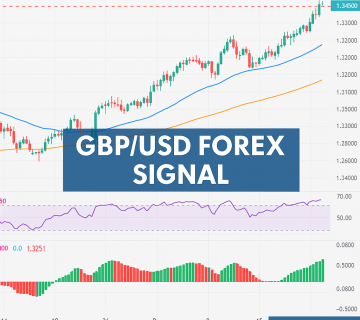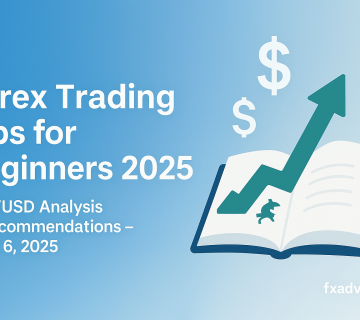Effective Forex Trading Strategies for Consistent Profits
Introduction:
Forex trading strategies are essential for achieving consistent profits in the volatile forex market. While some traders prefer technical strategies, others rely on fundamental analysis or a combination of both. This article will explore several popular forex trading strategies, including their pros and cons, and provide real-world examples of how to implement them effectively.
1. Scalping Strategy
Scalping is a short-term trading strategy that involves opening and closing multiple trades throughout the day to profit from small price movements. Scalpers typically hold positions for a few seconds or minutes, aiming to accumulate small gains that add up over time.
How It Works: Scalpers use low timeframes such as 1-minute and 5-minute charts to identify potential entry and exit points. They rely heavily on technical indicators like moving averages and RSI (Relative Strength Index) to time their trades.
Example: A trader uses the 5-minute chart to monitor EUR/USD. When the price breaks above a moving average, the trader opens a buy position, aiming to close it as soon as the price moves up by a few pips.
Pros:
- Quick profits with minimal exposure to market risk.
- No overnight risk since positions are closed before the day ends.
Cons:
- Requires a high level of focus and fast decision-making.
- High transaction costs due to frequent trading.
2. Day Trading Strategy
Day trading involves opening and closing positions within the same trading day. Unlike scalping, day traders hold positions for several hours, allowing them to capture larger price movements.
How It Works: Day traders often use timeframes between 15 minutes and 1 hour to analyze the market. They rely on both technical and fundamental analysis to identify trading opportunities.
Example: A day trader monitors the GBP/USD pair during a Bank of England interest rate announcement. If the rate is increased unexpectedly, the trader opens a buy position, anticipating a rise in the GBP’s value.
Pros:
- No overnight risk.
- Potential for significant profits due to larger price movements.
Cons:
- Requires a good understanding of both technical and fundamental analysis.
- Time-intensive and requires constant monitoring.
3. Swing Trading Strategy
Swing trading involves holding positions for several days or weeks to profit from medium-term price movements. Swing traders aim to capture “swings” in the market caused by price fluctuations.
How It Works: Swing traders use daily and weekly charts to identify trends and reversals. They often rely on technical tools like Fibonacci retracement and MACD (Moving Average Convergence Divergence).
Example: A swing trader notices a strong upward trend in USD/JPY. The trader waits for a pullback to the 50% Fibonacci level and opens a buy position, expecting the price to resume its upward movement.
Pros:
- Less time-intensive compared to scalping and day trading.
- Suitable for traders with limited time for market analysis.
Cons:
- Overnight risk due to holding positions for multiple days.
- Requires a larger account size to withstand market fluctuations.
4. Position Trading Strategy
Position trading is a long-term strategy where traders hold positions for weeks, months, or even years. It is based on fundamental analysis, with traders focusing on economic trends, geopolitical events, and central bank policies.
How It Works: Position traders use weekly and monthly charts to identify long-term trends. They often set wide stop-loss levels to accommodate large price movements and focus on major currency pairs like EUR/USD and USD/JPY.
Example: A position trader believes that the U.S. economy will outperform the Eurozone over the next year due to interest rate differentials. The trader opens a long position on USD/EUR and holds it for several months, targeting a significant price change.
Pros:
- Minimal time commitment as trades are monitored infrequently.
- Potential for large profits if the trade plays out as expected.
Cons:
- Requires a deep understanding of macroeconomic factors.
- High capital requirement to withstand large price fluctuations.
5. Trend Trading Strategy
Trend trading involves identifying the direction of the market and trading in the same direction. This strategy works well in markets that are trending, as it allows traders to profit from sustained price movements.
How It Works: Trend traders use moving averages, trend lines, and momentum indicators to confirm the trend’s direction. They enter trades in the direction of the trend and use trailing stop-losses to lock in profits as the trend continues.
Example: A trend trader spots an uptrend in the AUD/USD pair. The trader enters a buy position when the price bounces off a trend line and uses a trailing stop-loss to secure profits as the price rises.
Pros:
- Allows traders to capture large price movements.
- Low maintenance as trades are held for longer periods.
Cons:
- Trend reversals can lead to significant losses if not managed properly.
- Requires patience and discipline to hold positions.
Final Thoughts:
Choosing the right forex trading strategy depends on your trading style, risk tolerance, and market conditions. While some traders prefer quick scalping strategies, others might opt for longer-term position trading. It’s essential to backtest each strategy and adapt it to suit your trading goals and personality.
The Best Forex Trading Platforms of 2024
Forex Tips: 5 Forex Tips for Beginners to Start Trading Confidently
Learn Forex for all levels for free











